Pediatrics of Bartlesville, PLLC
Useful Medical Information
Fever
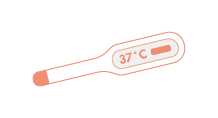
Fever is the body's response to infection. It is very important to remember that fever is not dangerous, but tends to make parents anxious and children uncomfortable. Fevers may trigger febrile seizures, but do not generally result in permanent brain damage.
If you believe your child may have a fever, use a digital thermometer to take your child's temperature, by mouth, under the arm or rectally. Low-grade fevers range from 100.4 to 102.0°F. Newborns and infants less than three months of age MUST be seen by us if they have a rectal temperature greater than 100.4°F, in order to rule out serious infections.
In order to make your child comfortable, we recommend treating fevers above 102.0°F. Acetaminophen (Tylenol®️) should not be used below 2 months of age; Ibuprofen (Motrin®️) should not be used below 6 months of age. Click here for appropriate doses. Aspirin should NOT be used since it has been associated with Reyes Syndrome, a serious illness that can result in death.
When your child has a fever, it is important to make sure that she is drinking plenty of fluids. You can also give your child a lukewarm sponge bath; avoid using cold water, ice water or alcohol. Dress your child in light cotton clothing, and place a wet cool cloth over the forehead.
Eye Injuries
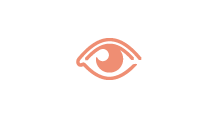
If anything is splashed in the eye, flush gently with water for at least 15 minutes. Call the Poison Control Center (1-800-222-1222) for further advice. Any injured or painful eye should be seen by a doctor. Do NOT touch or rub an injured eye. Do NOT apply medication. Do NOT remove objects stuck into the eye. Gently bandage the eye shut until you can get medical help.
Head Injuries
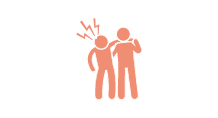
Do not move a child who may have a back or neck injury; this may cause harm. Call 911 for any loss of consciousness or drowsiness, persistent headache or vomiting, clumsiness or inability to move any body part, oozing blood or watery fluid from ears or nose, seizures, or abnormal speech or behavior.
Fainting
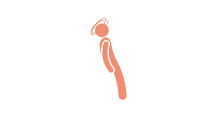
Lay your child on her back with her head to the side and her legs raised. Do NOT give anything by mouth. If the fainting was due to stress or fear, help your child talk about it. Contact us if your child does not wake up right away, or call 911.
Nosebleeds

Have your child sit up, lean forward and spit out the blood. Have a basin available so he can spit out any blood that drains into his throat. Swallowed blood is irritating to the stomach. Do not be surprised if it is vomited up. Have your child blow her nose to free any clots. Then lightly pinch the soft parts of the nose against the center all for 10 minutes. Do not release the pressure until 10 minutes are up. If the bleeding continues, you may not be pressing on the right spot. During this time your child will have to breathe through her mouth.
Dental Injuries
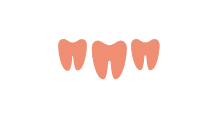
If baby or primary teeth are knocked out or broken, apply a clean gauze to control the bleeding and call your dentist. If one of your child's permanent teeth are knocked out, find the tooth, and rinse it gently without touching the root. Insert and gently hold the tooth in its socket or transport the tooth in cow's milk. Go directly to the dentist; time is important. If broken, save the pieces. Gently clean the injured area with warm water. Place a cold compress to reduce the swelling. Go to the dentist immediately.
Sinusitis
Studies have shown that yellow or green mucous in children with colds is not a definitive sign of a bacterial infection. When you have a cold, your immune system sends white blood cells to the area, which can turn the mucous green. Dehydration may also affect the color of mucous. Sinus pressure and headaches can occur due to sinus congestion with mucous, without a bacterial component. If a bacterial sinus infection is suspected by a physician, based on more comprehensive findings on exam, appropriate antibiotics will be prescribed. Please help us counter antibiotic resistance by tempering your expectations for antibiotics.
Colds
The common cold is a group of symptoms caused by a number of different viruses. There are hundreds of different viruses responsible for the common cold. In most cases, a specific virus causes a person to be ill only once, after which they are immune to that virus. However, because there are so many cold viruses, people may have multiple colds each year. Children under six years average six to eight colds per year with symptoms lasting an average of 14 days. Young children in daycare appear to suffer from more colds than children cared for at home, and often are sick for most of the cough and cold season. However, when daycare children enter primary school, they catch fewer colds, presumably because they are already immune to a larger number.
Common Cold Symptoms
The symptoms of a cold usually begin one to two days after exposure. In children, nasal congestion is the most prominent symptom. Children can also have clear, yellow, or green-colored nasal discharge. Fever (>100.4º F) is common during the first three days of the illness. Other symptoms may include sore throat, cough, irritability, difficulty sleeping, decreased appetite, and swollen lymph nodes. The symptoms of a cold are usually worst during the first 10 days. However, some children continue to have a runny nose, congestion, and a cough beyond 10 days. In addition, it is not unusual for a child to develop a second cold as the symptoms of the first cold are resolving; this can make it seem as if the child has a single cold that lasts for weeks or even months, especially during the fall and winter. This is not a cause for concern, unless the child has any of the more serious symptoms, as discussed below.
Common Cold Treatments
Antihistamines, decongestants, and cough medicines, alone and in combinations, are NOT recommended for children. These products are all marketed for cold symptoms. However, we agree with the United States Food and Drug Administration (FDA) advisory panel’s repeated recommendations against the use of these medications in children because they have not been shown to be effective and have the potential to cause dangerous side effects. For this reason, we do NOT prescribe cough medicines.
Humidified air and steaming in the bathroom twice daily for 10-15 minutes can improve symptoms of nasal congestion and runny nose. For infants, parents can try saline nose drops to loosen the mucus, followed by bulb suction. It is helpful to occlude the opposite nostril for adequate suction.
Parents should encourage their child to stay hydrated. Children often have a reduced appetite during a cold, and may eat less than usual. Don’t worry as long as they are staying hydrated and urinating at least 4-6 times per day. Breast milk and Pedialyte®️ are appropriate fluids for infants and toddlers, and water and soups are acceptable for older children.
A number of herbal and alternative products, including zinc, vitamin C, and herbal products such as echinacea, are advertised to treat or prevent the common cold. None of these treatments has been proven to be effective in clinical trials; their use is not recommended at this time.
Vomiting & Diarrhea
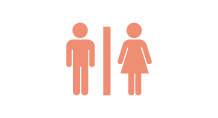
Vomiting and diarrhea in children can cause dehydration or water loss, especially if accompanied by fevers. Severe cases may cause losses in electrolytes such as sodium, potassium, and chloride, which are vital for life.
While missing a meal or two will cause no harm to an otherwise healthy child, it’s important that a sick child continue to drink extra fluids to make up for fluid loss and prevent dehydration. Infants and toddlers are especially susceptible because they are less efficient at conserving water than their older peers. In addition, their small body size means that it takes less fluid loss to lead to dehydration.
Offer frequent sips of water or, if your child doesn’t feel like drinking, ice chips to suck on. Build up to 1 oz an hour, then 2 oz an hour until the child is able to drink normally. We may also recommend a commercial rehydration solution (such as Pedialyte©️) to help replace lost electrolytes in your sick child. These come in liquid and Popsicle-like forms to make them more appealing to children. Commercial sports drinks and juices are not recommended as their larger sugar content can worsen the diarrhea. Anti-diarrheal medications are not recommended.
Seek urgent medical attention and contact us immediately if your child is too sick to drink or listless, or shows signs of worsening dehydration such as dry mouth, sunken eyes, fewer tears, or urinates less than three times daily.
Burns and Scalds
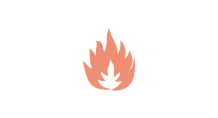
For minor burns without blisters, place the burned extremity into cold water or cover the burned part with a towel soaked in cold water until the pain stops (at least 15 minutes). Do not use ice. For burns with blisters, do NOT break the blisters. Call us for advice on how to cover the burns. ANY burn on the face, hands, feet or genitals and any large burn should be seen by us. Call 911 for any large or deep burn. Remove clothing. Do NOT apply any medication. Keep your child warm with a clean sheet and then a blanket until help arrives. In the event of an electrical burn, disconnect the electrical power. Do NOT touch with bare hands. Pull your child away from the power source with wood or a thick, dry cloth. All electrical burns need to be seen by a doctor.
Stings and Bites
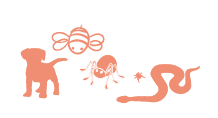
For human or animal bites, clean the bite with generous amounts of soap and water. Apply direct pressure for active bleeding. Call us for further advice. For snake bites, do NOT try to capture the live snake. Contact your local Poison Center (1-800-222-1222) and take your child to the emergency room. Do not apply a tourniquet or ice. Immobilize the affected limb and try to keep it lower than the level of the heart. For ticks, using tweezers, grasp the tick as close to the skin as possible and remove it straight up from the skin, making sure to remove the head. If a rash develops around the bite, or your child develops a fever, headache or joint pain/swelling, contact us. If your child is stung by an insect or bitten by a spider, apply cool compresses to relieve the pain. If a long stinger is visible, attempt to remove it. Contact 911 if there are signs of allergy: trouble breathing, swelling of the lips, tongue or throat. Contact us for spider bites that appear infected, ulcerated or are very painful.
Seizures
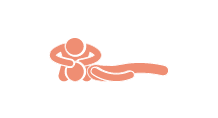
Protect your child from injury. Perform rescue breathing if your child is blue or not breathing. If breathing, lay your child on his side. Put nothing in the mouth. Call 911.
Poisons

If your child is unconscious, becoming drowsy, having Seizures or having trouble breathing, call 911. Any non-food substance is a potential poison if swallowed. Call the Poison Control Center (1-800-222-1222) immediately. Do not induce vomiting except on professional advice. If your child is exposed to fumes, gases or smoke, get him to fresh air. Call 911 or the fire department. If your child is not breathing, start CPR and continue until help arrives. If your child's skin comes into contact with acids, lye, pesticides, chemicals or any potentially poisonous substances, gently brush off dry material. Remove contaminated clothing. Wear rubber gloves if possible. Wash skin with large quantities of soap and water. Call the Poison Control Center (1-800-222-1222) for further advice.
Antibiotics
Antibiotics help the body fight off bacterial infections in children, and are NOT appropriate for viral infections. We at Pediatrics of Bartlesville take pride in being responsible stewards of appropriate antibiotic utilization, and follow standards of care when prescribing them.
Inappropriate usage of antibiotics may cause severe diarrhea, yeast infections, and most importantly, bacteria resistant to antibiotics. Antibiotic resistance has become a serious public health threat, both locally and globally, and contributes to many deaths. Please see what the CDC has to say about this crisis.
There are steps you can take to check the spread of antibiotic resistance in our community. If your child has a fever, do NOT use any leftover antibiotics from older prescriptions for your child or any other person. When prescribed, ensure the completion of the ENTIRE course of antibiotics; never skip any doses. Make sure your children are vaccinated against bacterial infections as recommended. Finally, we request that you temper your expectations for antibiotics when bringing your sick child to us.
Eczema
Eczema is a type of skin inflammation that presents as a red, itchy rash. It often that often starts on the cheeks at 2-6 months of age, and is very common on the creases of the elbow, wrist, and knee. Occasionally, it can also be seen along the neck, ankles, feet, and behind the ears.
A strong family history of asthma, seasonal allergies, food allergies, or eczema makes it more likely that your child may develop eczema. Flare-ups occur when there is contact with irritating substances (i.e. soaps or chlorine). In 30% of infants with eczema, certain foods can cause flare-ups. If you suspect a particular food, avoid it for 2 weeks, and then re-introduce it to see if it is the cause. If a flare-up does occur, avoid ever giving that food to your child until you talk to your doctor.
A main strategy of home therapy involves keeping the skin moisturized to prevent flare-ups. Your child should bathe once a day for about 10 minutes. Eczema is very sensitive to soaps. We recommend a mild soap like Dove Sensitive®️ or Cetaphil®️. Only use soap in areas that seem dirty. Washing with water should be sufficient. Never use bubble baths, baby soap, or perfumed shampoo on your child's skin. After bathing, gently pat your child dry with a towel, try not to rub his skin too vigorously. To help trap the moisture after the skin is hydrated, we recommend a lubricating cream such as petroleum jelly, Vaseline, Aquaphor, or Eucerin cream. This is to be applied on top of the steroid cream, if ordered.
Steroid cream is the main treatment for eczema. Over-the-counter hydrocortisone 1% ointment is extremely mild and is safe for you to apply twice a day, every day, to any rough patches on your child's body. Do not apply hydrocortisone to the diaper area, or the area around the mouth or eyes without first speaking to our office. Apply the steroid cream to rough or itchy patches twice a day until the patch goes away. Continue with the bathing and moisturizing to try and prevent flare-ups. Dry patches will likely reappear. Immediately restart the steroid cream to the affected area. Keep your child's fingernails short and wash their hands frequently to avoid infection. Many children will need something stronger than over-the-counter hydrocortisone. If your child's rash is not improving within one week of using the ointment, call our office for an appointment.
Once the dry patch has resolved, it is common for the skin underneath to look either lighter or darker than the surrounding skin. This is the skin's reaction to healing from inflammation. If the skin is smooth, but darker or lighter than the surrounding skin, don't use the steroid cream anymore. It will likely take many months, but the skin pigment will even out over time.
Avoid triggers that can cause flare-ups, such as excessive hot or cold air or harsh chemicals. Clothes made of cotton are more comfortable than wool fibers or other scratchy materials.
Transmission
Colds are transmitted from person-to-person, either by direct contact or by contact with the virus in the environment. Colds are most contagious during the first two to four days. Some cold viruses can live on surfaces (such as countertops, door handles, or toys) for several days, and some can be spread when droplets containing viral particles are exhaled into the air by breathing, coughing, or sneezing, and then inhaled by another.
Cough
Coughing is your body's way of clearing secretions and mucus, to keep it from 'settling' in your lungs. It serves a very useful purpose; so coughs should NOT be suppressed. Cough medicine is ineffective; not buying it is a good way to save some money. Parents often notice that they feel 'congestion' rattling, or vibrating in their child's chest when he has a cold. The entire airway is connected from the nose to the lungs, and noise from congestion in the nose and sinuses travels all the way down into the chest, and thus seems as though it is originating in the chest. The only way to tell whether the congestion is truly in the lungs or simply being transmitted from the nose and sinuses is for a doctor to listen with a stethoscope. If your child is coughing mildly and/or infrequently with a cold virus, it is likely simply secondary to the cold. If your child's cough is persistent and bothersome, perhaps affecting his sleep, and/or if he seems to be breathing hard or fast when you observe his chest, the cough could signify a process in the lungs. If this is the case, please contact our office.
Most children who have colds do not develop complications. However, parents should be aware of potential complications, such as ear infection, sinusitis, wheezing, and pneumonia.
Pediatric Advisor Index
Our advisor program covers a variety of pediatric issues with informative advice.
This resource is not subject to one opinion, so they will vary from physician to physician. The information given isn’t meant to replace treatment decisions that your physician has given for your child based on his or her medical history and physical exam. If you have any questions or concerns regarding the index, please contact us for further clarification.
